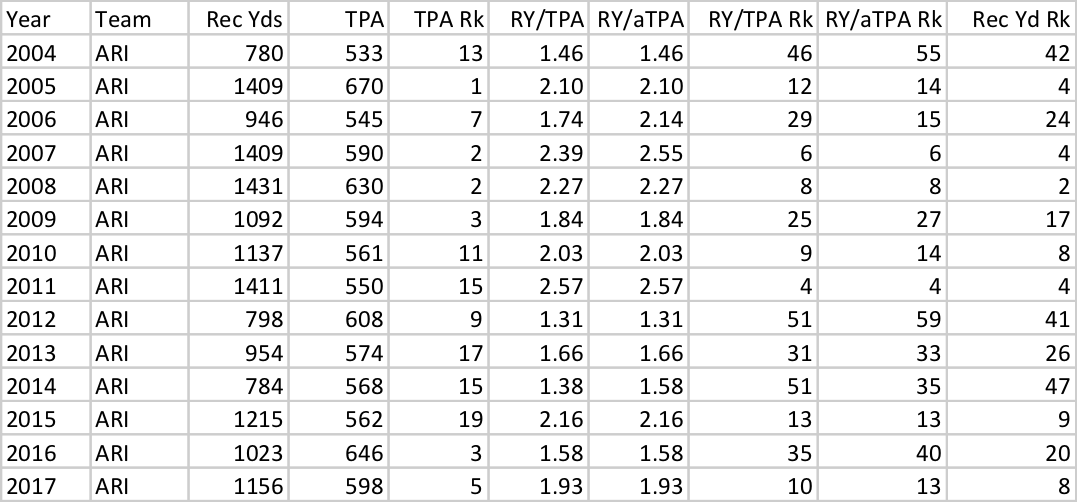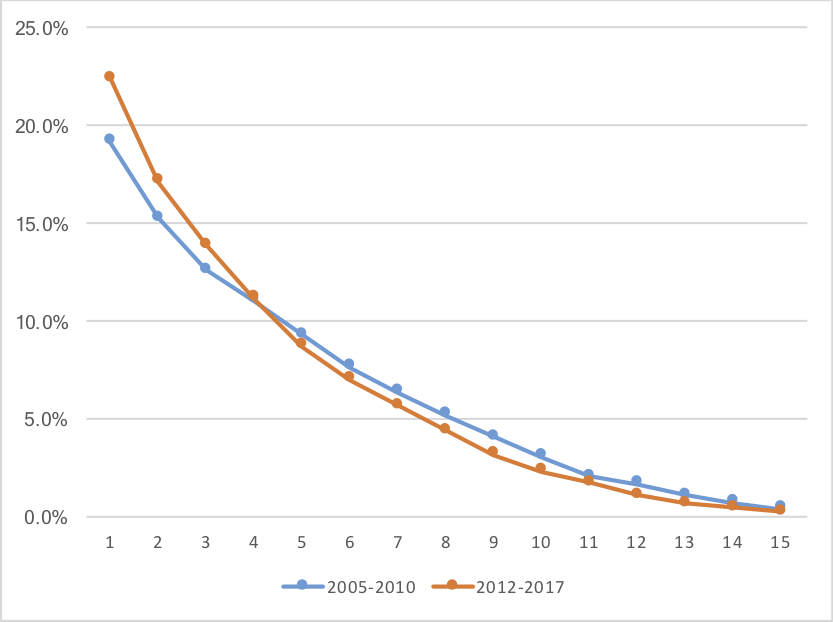
The Patriots like to pass the ball, even when ahead. Which they usually are.
In
June, I published the Game Scripts results from every game of the 2017 season. A team’s Game Script is simply the average points differential over every second of every game. The largest Game Script of the season came in the
Rams/Seahawks game in Seattle last year that the Rams won by a score of 42-7. Just as impressive as the final score was how Los Angeles got up on Seattle early, which is how a team gets a very high Game Script: LA was up 13-0 after the first quarter and 34-0 at halftime, and finished with a Game Script of +23.4. This means, on average, the Rams lead by 23.4 points over the course of the 3600 seconds in that game.
Not surprisingly, LA only passed on 36.8% of plays in that game. In general, as Game Script goes up, Pass Ratios go down. In 2017, for every point of Game Script, a team would be expected to pass about 0.72% less often. A team with a Game Script of 0 would be expected to pass on 57.6% of plays; if the Game Script was -10, it would be expected to pass on 64.8% of plays, at -5, 61.2%, at +5, 54.0%, and at +10, 50.4%.
Last year, the Dolphins were the most pass-happy team in the NFL. Miami finished the year with 602 pass attempts, 33 sacks, and just 360 runs; in other words, the Dolphins passed on 63.8% of all plays last year. If you take the calculate the average pass ratio for the Dolphins in each game, Miami has a 63.9% pass ratio (I have decided to use an average of the average approach for this post, rather than an average of the gross). That was 1.74 standard deviations above average last year, since the average pass ratio was 57.6% and the standard deviation was 3.6%. However, the Dolphins had an average Game Script of -5.27, which was 1.65 standard deviations below average. The average Game Script, by definition, is 0, and the standard deviation last year was 3.20.
So Miami wasn’t particularly pass-happy once you account for Game Script. But you know who was? The team with the Hall of Fame quarterback, Hall of Fame tight end, and star young wide receiver. And in addition to Tom Brady, Rob Gronkowski, and Brandin Cooks, three of New England’s top four running backs are known just as much (if not more) for their receiving prowess than their rushing ability: Dion Lewis, who caught 91% of his targets last year, Rex Burkhead, who had 264 rushing yards and 254 receiving yards, and James White, who had 56 receptions and just 43 carries.
By traditional numbers, New England ranked 16th in the league in pass ratio. But the Patriots are the Patriots, a team that generally plays with the lead. New England finished the year with a Game Script that was +1.66 standard deviations above average and a pass ratio that was 0.29 standard deviations above average. Add those two numbers, and New England’s Pass Identity was +1.95, easily the strongest in the league. The table below shows the results from every team last season. [continue reading…]




